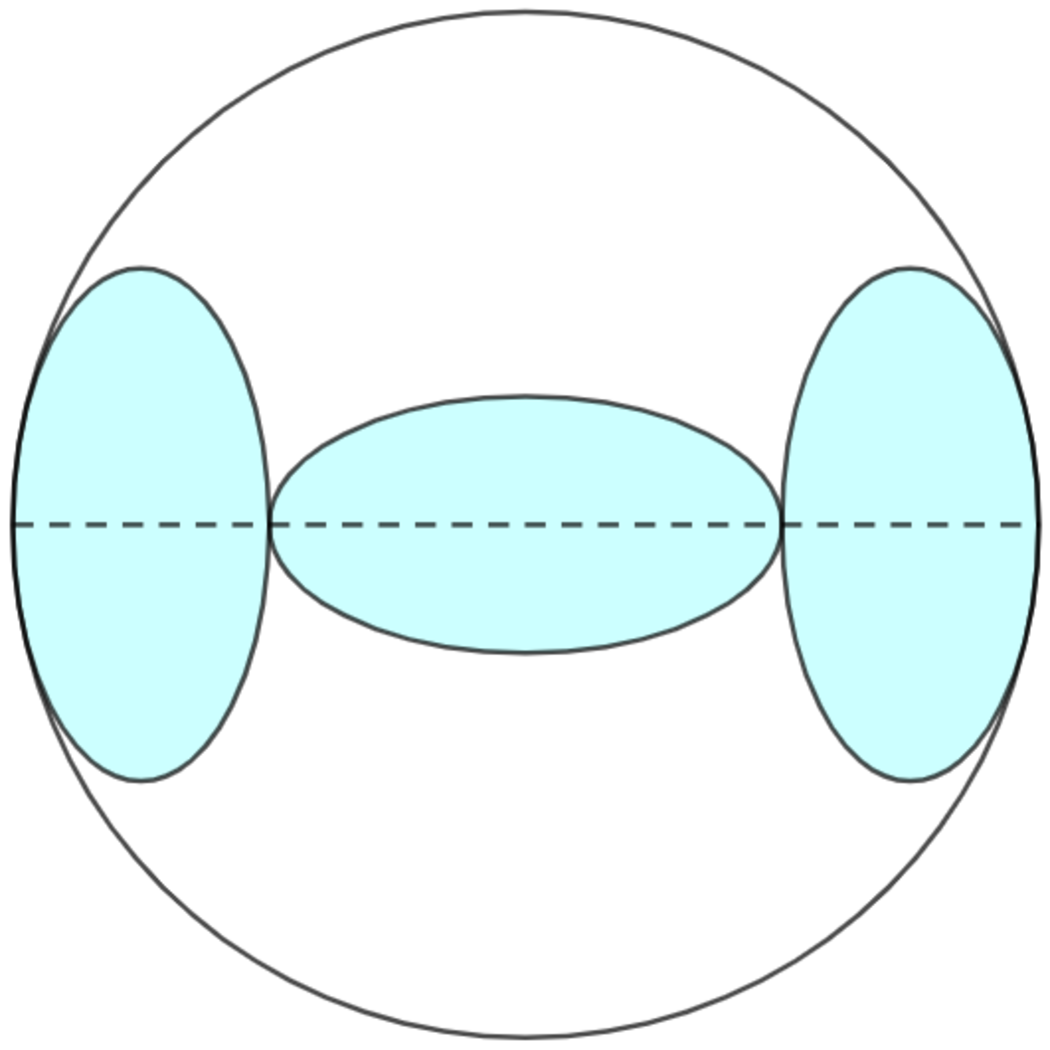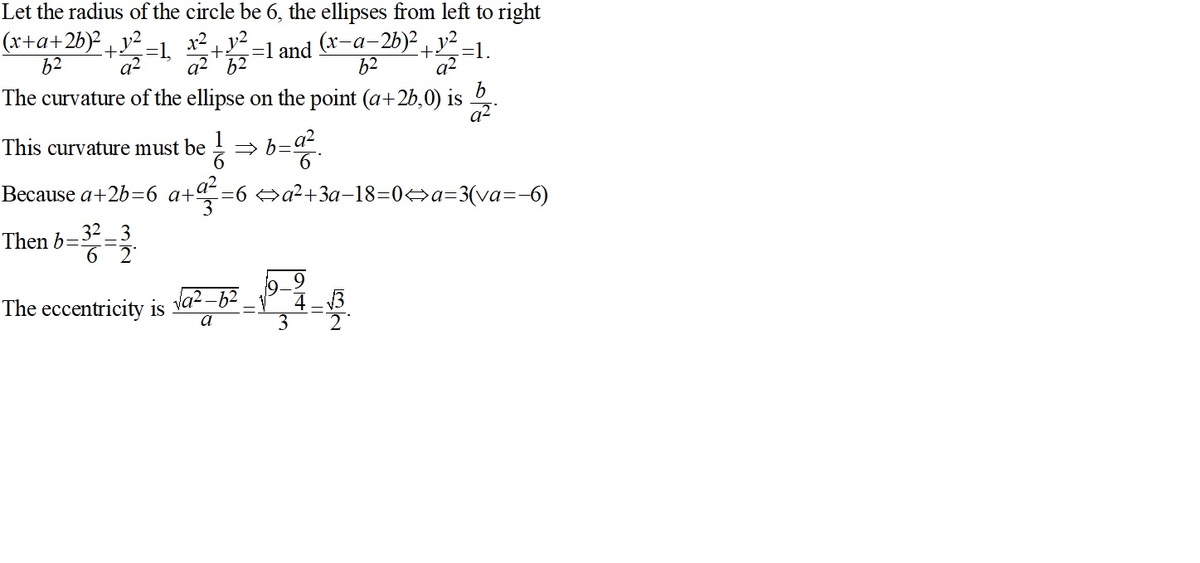Three Ellipses and a Circle

As shown above, it is possible to inscribe three identical ellipses (in cyan) in a circle, such that their major and minor axes are collinear with the diameter. If the maximum possible eccentricity of those ellipses is , input as your answer.
Also try the sister problem I posted.
The answer is 866025.
This section requires Javascript.
You are seeing this because something didn't load right. We suggest you, (a) try
refreshing the page, (b) enabling javascript if it is disabled on your browser and,
finally, (c)
loading the
non-javascript version of this page
. We're sorry about the hassle.

Let the circle be centered at the origin and have a radius of 1 , so that it has an equation of x 2 + y 2 = 1 .
Let the each identical ellipse have a major axis of a and a minor axis b . From the segment along the diameter, 2 b + 2 a + 2 b = 2 , so that a = 1 − 2 b .
The minor axis is less than that the major axis, so b < a , or b < 1 − 2 b , which means b < 3 1 .
The ellipse on the right is centered at ( 1 − b , 0 ) , so its equation is b 2 ( x − 1 + b ) 2 + a 2 y 2 = 1 .
Substituting a = 1 − 2 b and y 2 = 1 − x 2 , the equation becomes b 2 ( x − 1 + b ) 2 + ( 1 − 2 b ) 2 1 − x 2 = 1 and rearranges to ( x − 1 ) ( x − 1 − 3 b 8 b 2 − 5 b + 1 ) = 0 , which means that the ellipse and the circle intersect at x = 1 and x = 1 − 3 b 8 b 2 − 5 b + 1 .
For the ellipse to be inscribed and not intersect the circle, 1 − 3 b 8 b 2 − 5 b + 1 = x ≥ 1 , which for b < 3 1 solves to b ≥ 4 1 .
Since the eccentricity of the ellipse is e = a a 2 − b 2 = 1 − 2 b ( 1 − 2 b ) 2 − b 2 , it is a decreasing function for 4 1 ≤ b < 3 1 and has a maximum value at b = 4 1 of e = 1 − 2 ⋅ 4 1 ( 1 − 2 ⋅ 4 1 ) 2 − ( 4 1 ) 2 = 2 3 .
Therefore, ⌊ 1 0 6 e ⌋ = ⌊ 1 0 6 ⋅ 2 3 ⌋ = 8 6 6 0 2 5 .